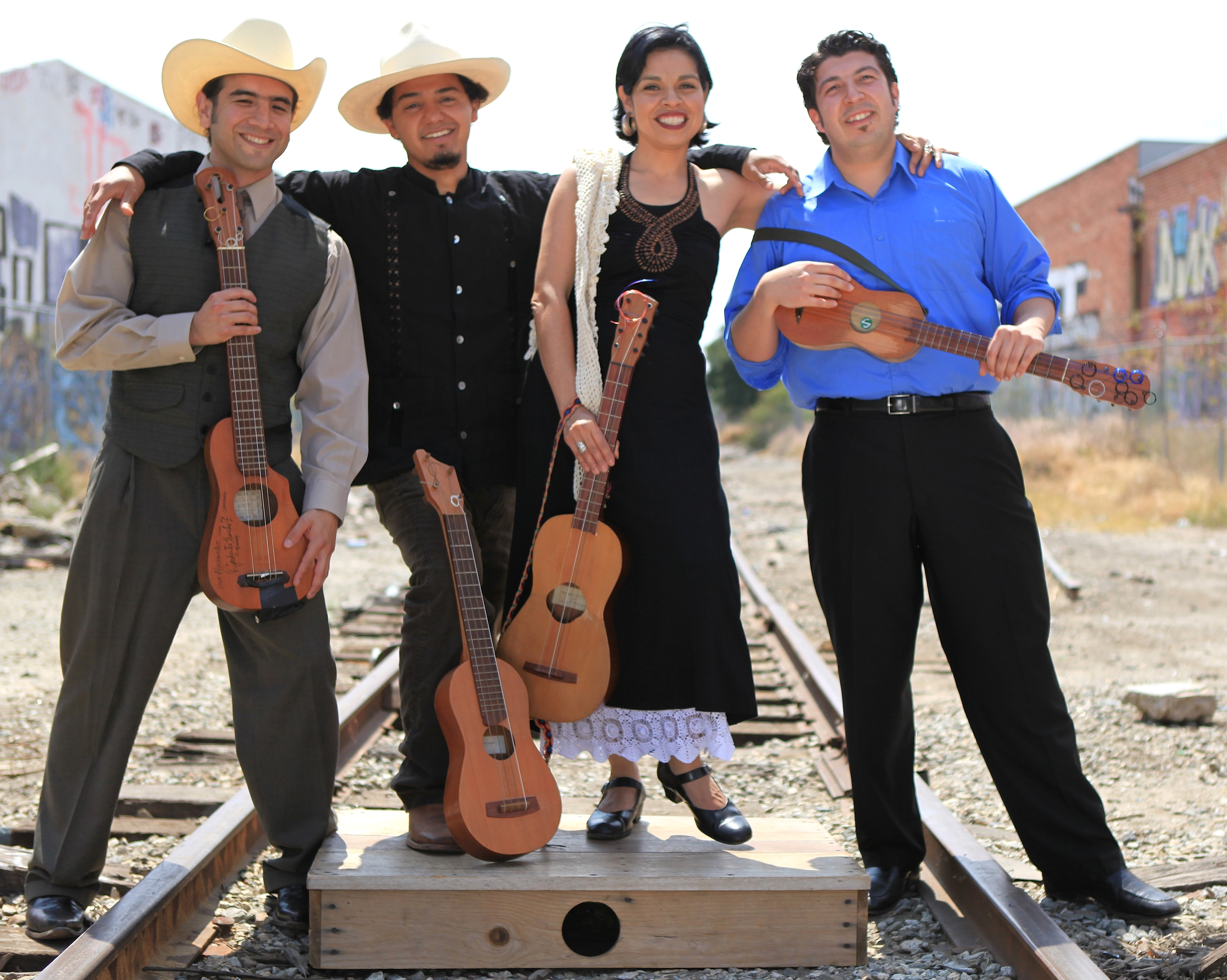In Spanish, the word “cambalache” means exchange. For the Chicano music group Cambalache, it represents a cultural exchange between Chicanos in the United States and southern Veracruz, Mexico.
Cambalache is a Chicano-Jarocho group that was founded in 2007 and is currently led by Veracruz native César Castro.
On Thursday night, the East L.A.-based group will perform son jarocho music, a popular genre in Veracruz, at the Fowler Out Loud concert series in the Fowler Courtyard. Son jarocho combines singing, dancing and the use of traditional Veracruz instruments, such as jaranas and requintos (which are both guitar-like instruments), the bass and the tarima (a wooden platform to dance on).
Xochi Flores, jarana and zapateado dancer, said the music has many influences from different parts of the world, including Spain, the Middle East and Africa.
According to Alexandro Hernández, requinto player and graduate ethnomusicology student, the songs that Cambalache performs could cater to almost every type of mood.
“Whether it’s a demand for social justice (or) heartbreak, whether it’s something you want to play on a Sunday afternoon or something you really want to dance to, there’s a song for everything,” Hernández said.
The band will play a two-hour-long set that includes the cover “La Bamba,” a Veracruz native song made famous by Ritchie Valens, as well as a song titled “La Morena (dark-skinned woman),” to which the band has made special arrangements, according to Hernández. “One of the main goals is to constantly improvise,” Hernández said. “We never play the same song ever the same way. There’s a lot of improvisation in the vocals, heavy use (of) it is mostly in the playing of the instruments and in the dance.”
Cambalache will be the second group to perform as part of the Fowler Out Loud concert series. The performance is in relation to the Fowler Museum’s current exhibition, “Mapping Another L.A.: The Chicano Art Movement,” which is also part of the Getty Pacific Standard Time initiative.
“We consider it a cultural exchange between people with ancestries both born in the U.S. and those raised in Veracruz,” Hernández said. “It’s an exchange of our experience and the histories here and there. We try to play the son jarocho music as (traditionally) as possible.”
Jazmin Morales, a second-year ethnomusicology student and curator of the Fowler Out Loud music series, said that although son jarocho music is predominantly popular in Veracruz, Chicanos in Los Angeles use it as a way to identify with the Mexican side of their identity.
“Son jarocho made its way to America in the ’70s. … Once it came to America, the Chicano force was going really strong and they identified with the music as a way of going back to their roots and origin of their identity,” Morales said.
Castro, who is the only Veracruz native of the group, helps maintain the authenticity of the son jarocho music the group performs, according to Morales.
“César is one of the few people who has mastered the art of the décima, the lyric form of improvising. That is an impressive feature that marks a good jarocho musician,” Morales said.
According to Morales, Castro is well-known among the son jarocho community, both in Veracruz and Los Angeles.
Flores said that Castro is a good person to turn to when the band wants to learn more about the music’s origins and how to improve their own style.
“I am just lucky to have this kind of information. I can ask him anything about it. We are from L.A., so it’s great that we can go to him with questions and musical doubts,” Flores said.
